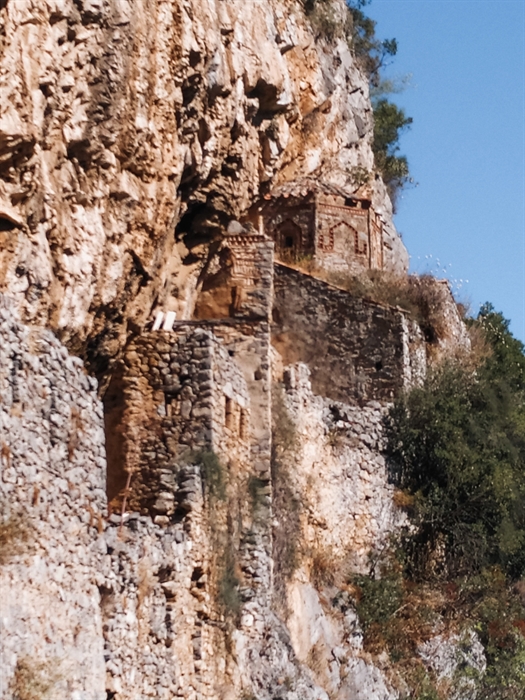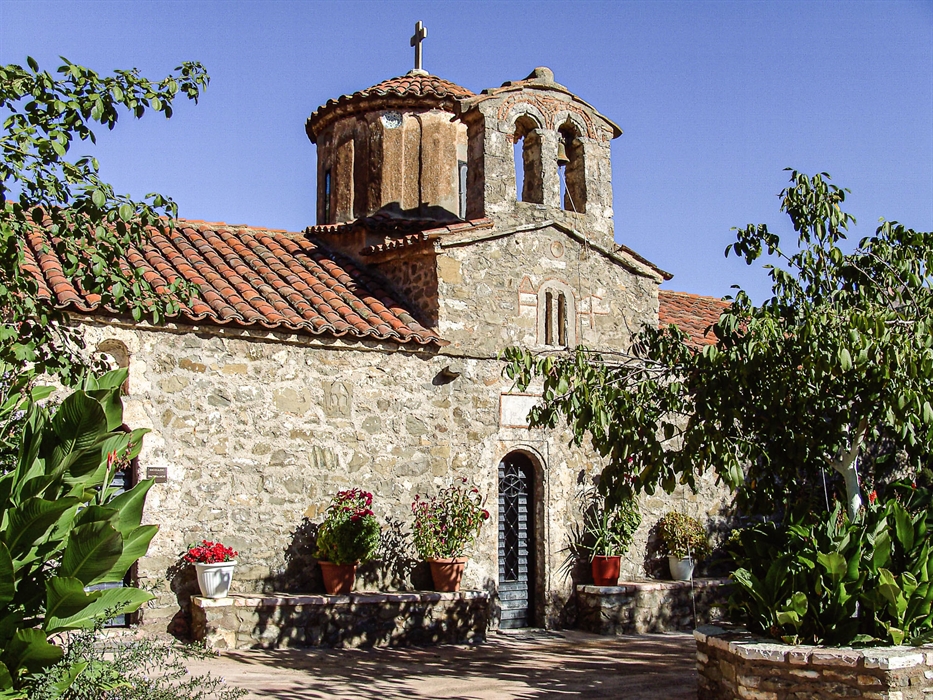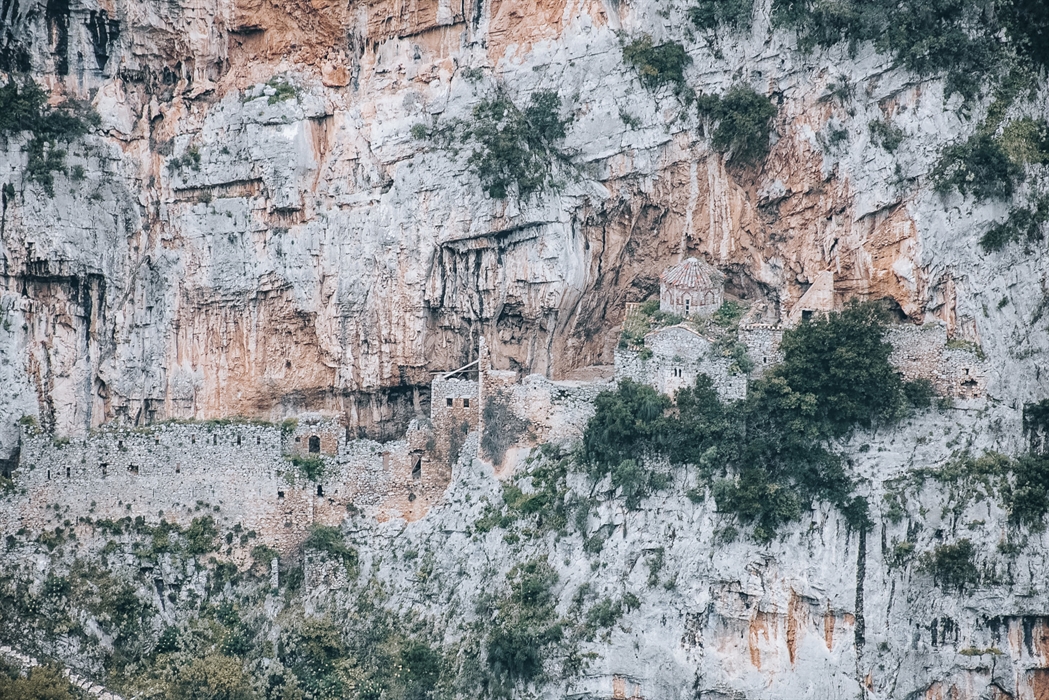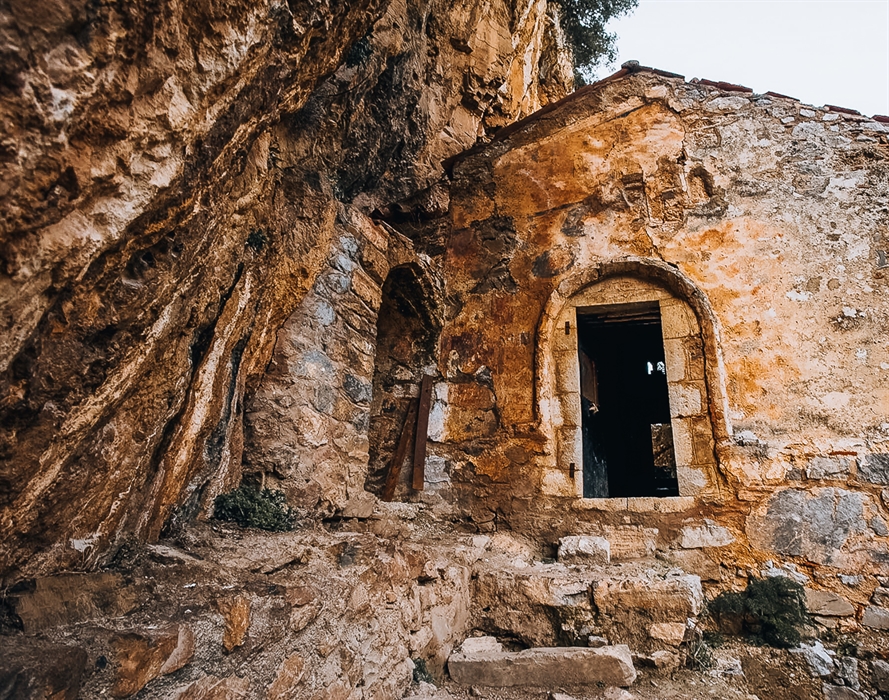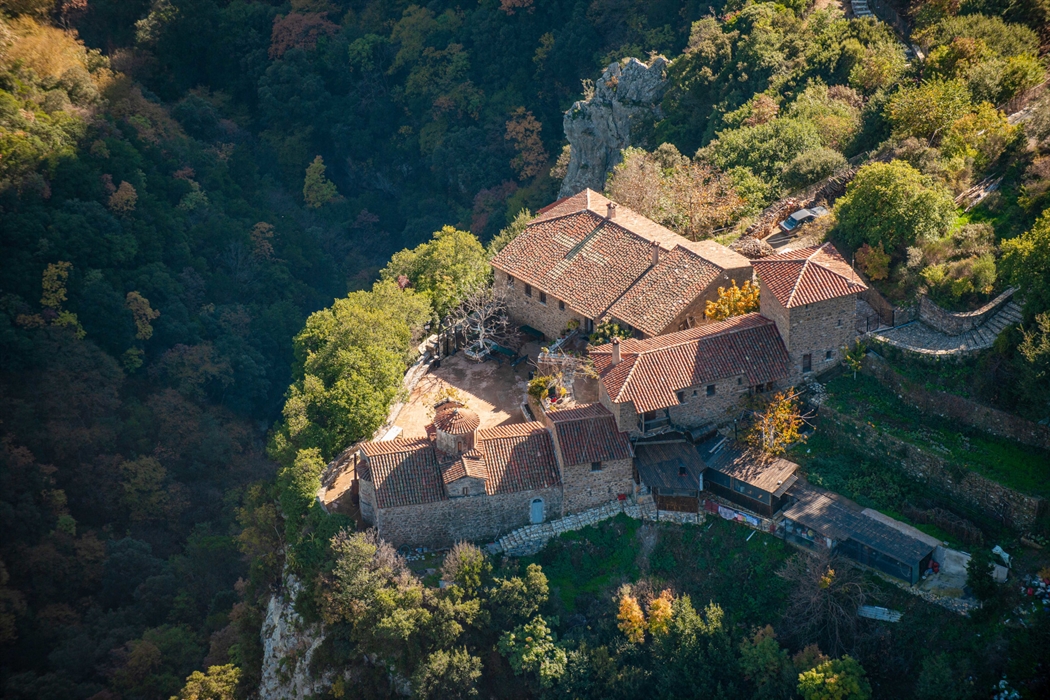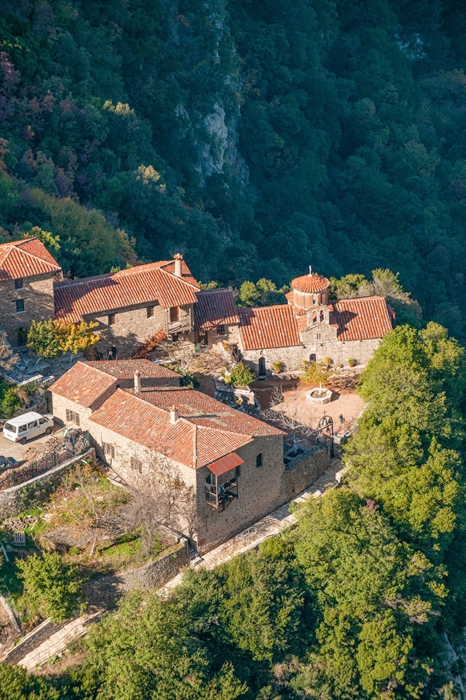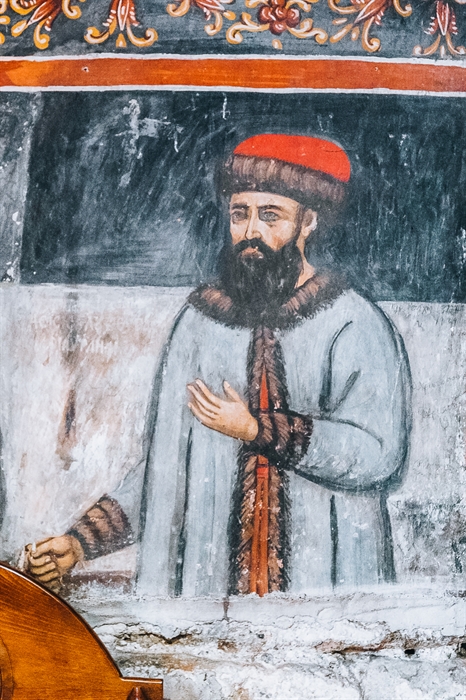Old and New Monastery of Philosophos
This complex is one of the most important pilgrimages and monasteries in the Peloponnese. They were built at one of the most rutty and impressive spots of Lousios gorge. The Old Monastery of Philosophos is an impressive monument. It was associated with the figure of I. Lampardopoulos, who was dubbed “philosopher”, and it became a brilliant cultural centre. In fact, it is said that it housed a Secret School.
The Monastery of Philosophos is built at one of the most rutty and impressive spots of Lousios gorge. It consists of two distinct complexes: The Old (lower) monastery and the New (upper) monastery, connected through a trail. This complex is one of the most important pilgrimages in the Peloponnese.
Its history starts with the Old Monastery, which was founded in 963-967, when the emperor of Byzantium was Nicephorus Phocas. He has been associated with one of his most trusted and important cultivated officials, Ioannis Lampardopoulos, who came from Dimitsana. He was dubbed “philosopher” - probably because he held a title of a University Professor at the time. At the end of his term of office, Lampardopoulos seems to have decided depart this life and become a monk, but also help educate people in his homeland. Thus, he founded the Monastery of Philosophos and its seminary.
Although there are very few sources until 1624, it seems that the monastery prospered and developed into a brilliant cultural centre in the Peloponnese. It housed a library with significant manuscripts of the 12th century, some of which have been preserved and are kept in the National Library of Athens. A great number of prelates and scholars graduated from the monastery’s seminary. In fact, its great contribution is recognised by folklore, since the Monastery of Philosophos is designated a Secret School, operating most probably in the catholicon. There, the children of Christians learned how to read, who found shelter from the Turkish raids at the hermit caves which were scattered in the gorge of Lousios.
According to scholars, the heyday of the Old Monastery of Philosophos was the 17th century, when it possessed a great property, estates, etc. However, at the end of the century, several problems came up, probably caused by the lack of space and its inaccessible location. The monks decided to found a new monastery, a bit further north.
Its catholicon was founded in 1691, and in 1693, it was decorated with wall paintings of exquisite artistic value. The new monastery kept on doing a great service for the cultural life of the region, along with the seminary, which was transferred to Dimitsana in 1764. There it operated as the Greek School of Dimitsana.
After a lot of adventures, the monastery was deserted in 1834. In 1922, by royal decree, it became a department of the Monastery of Timios Prodromos. Thanks to the Directorate for the Restoration of Byzantine and Post-Byzantine monuments of the Ministry of Culture, the New Monastery of Philosophos was renovates and restored. The three-storey guesthouse, which is also called “tower”, was built in 1700. What really impresses the visitor in the catholicon is the delicate wood-carved iconostasis with despotic icons of high artistic value.
From the Ne Monastery you’ll descend to the Old one, enjoying the landscape of Lousios gorge. Although deserted, the fortress-like monument remains impressive and looks like the enormous rocks surrounding it. The rock’s cavity, where it’s built, is 128 m long, but its width ranges from 8 m to 50 centimetres. On the defensive walls there used to be loops, openings and steps. They supported the buildings like struts and rendered the monastery almost unconquerable. The cells and auxiliary buildings were two-storey, but nowadays they are deserted. The catholicon of the 10th century is pretty well-preserved, a cross-in-square church, with an octagonal dome, formerly covered with iconography. It is dedicated to the Dormition of the Mother of God. The dome and parts of the masonry have a tasteful brickwork decoration. The ossuary lies next to it.
Tel.: 27950 81447.
Location
Find the destination on the interactive map below.
Categories
Σχετικό περιεχόμενο χρηστών (UGC)
Ενημερωθείτε για ενδιαφέροντα θέματα γύρω από τον προορισμό μέσα από το περιεχόμενο των χρηστών μας
Discover 7 hidden gems of the Peloponnese
Many of you may have already visited some of the most renowned attractions…
TOP 10 archaeological museums in the Peloponnese
Olympia, Mycenae, Epidaurus, Diros Cave, Ancient Corinth, Messene and…
TOP 10 Castles in the Peloponnese
Castles galore! Mystras, Monemvasia, Palamidi, Methoni, Koroni,…
Newsletters
- About us
- FAQ's
- Map
- Tourism information centers
- Disclaimer
- Sitemap
- Our brand
- Media roum
- Adding your bussiness
- Corporate
- MICE

Peloponnese. Greece beyond the obvious





Design and creation from Cosmote
Marinas and Moorings
Diving centers
Get inspired
- Media gallery
- Blog
- The Peloponnese in the media
- Your feedback
- Users' general content
- Users' local products
- Users' events content
- Ask a local
More
- Accommodation
- Travel agencies
- Restaurants
- Services
- Destinations Map
- Weather
- Public transport
- Events
- Frequently asked questions
- Useful phones
- B2B
- Destination Data
- Contact

